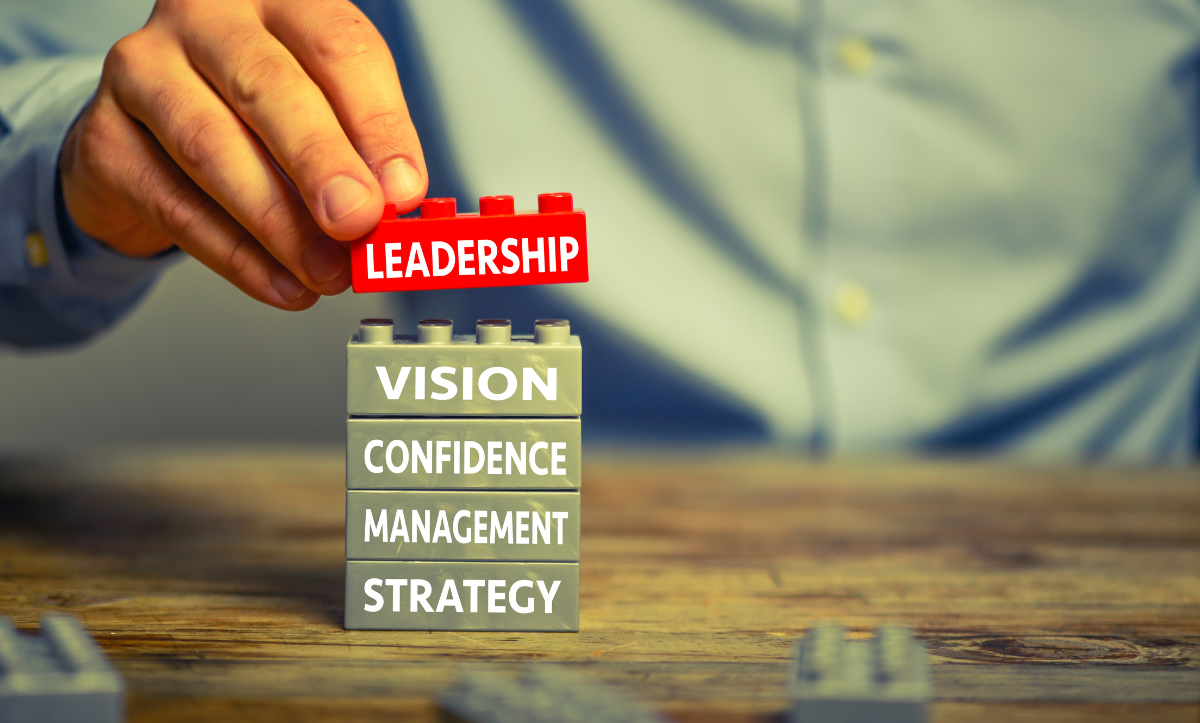
How to Create a Result-Driven Leadership Development Program?
Imagine an organisation without leaders. How would it be?
With no leadership, there will be:
- No vision: Your team members will have no clarity about the vision. They won’t be able to align their thoughts with something that gives them a direction to get going.
- No values: Your organisation will lose coherence within departments. No one will direct the day-to-day behaviour and a sense of community or culture.
- No unity: Your people won’t be able to focus on common goals. It would be more about status or jockeying for the favour.
In short, your organisation will turn into an unhealthy culture where no one will recognise emerging challenges or opportunities to become the next big thing. Further, developing leadership positions will become extremely important with the intensifying digitisation and the surging power of data.
While overwhelming evidence, TED-like talks, conferences, books, and Google articles have all the answers, only 7% of CEOs believe their companies are building effective global leaders. And just 10% believe that leadership development initiatives have a clear business impact.
This is why leadership development at work needs to scale, and if you think there is a silver bullet that will single-handedly help you deliver, you need to rethink your actions. This article breaks down leadership development into an action-oriented plan of action so that you don’t have to browse through hundreds of resources to find your answer.
Let’s begin!
What is leadership development?
Strong leaders have the capability and credibility to steer your organisation in the right direction. This is where an effective leadership development program comes into the picture. This is the bedrock of introducing practical lectures and activities into your culture that can lay the foundation for better leadership today and in future.
It is a way that enables organisations to experiment with new behaviours, learn from real-life experiences, and build new skills as a leader. It allows your leaders and potential leaders to learn and reflect and prepare them to face current and futuristic challenges of the real world.
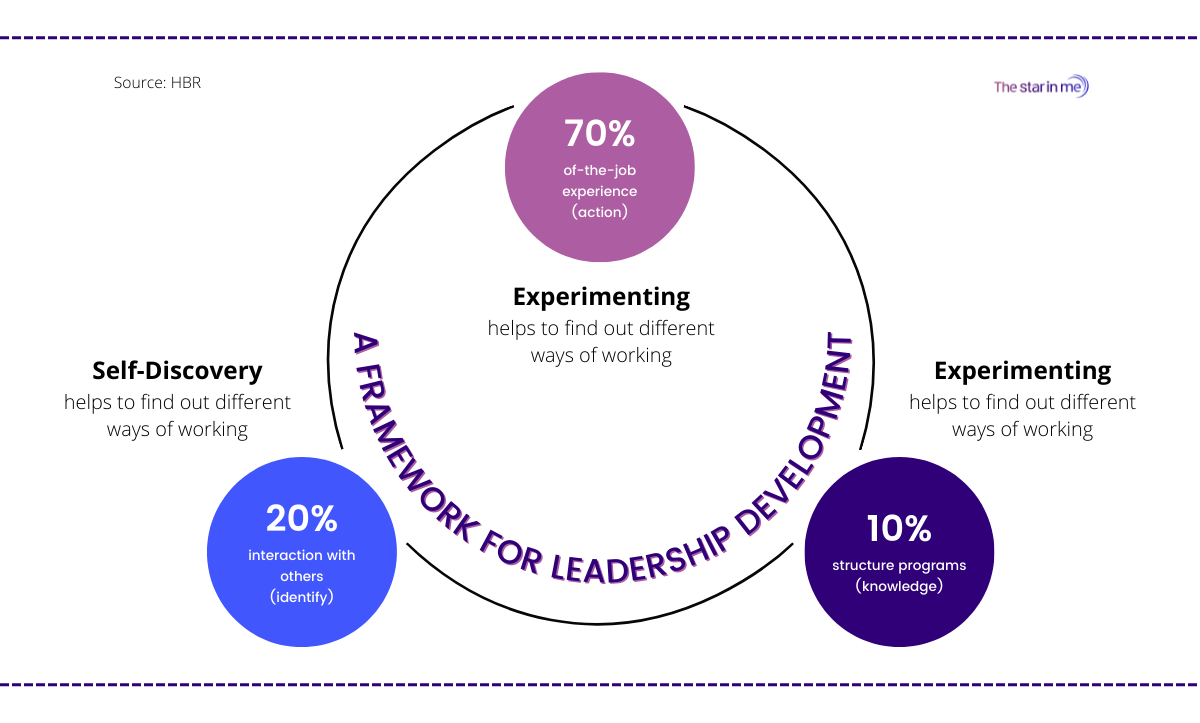
While many feel most of the work gets done by learning on the job or communicating with others, many organisations forget that the difference between success and failure is “10%” driven by structural programs. Here are the three elements of a perfect leadership development program.
- Sensemaking is about understanding the organisation dynamics and how they work.
- Experimenting is about testing ideas you learn in sessions with colleagues and coaching and applying them in real life.
- Self-discovery is about figuring out an individual identity in the workplace.
In other words, using different strategies, a leadership program will widen the capability of individuals to perform their leadership roles efficiently. It is the right way to hone the skills of your employees to take on critical responsibilities in an organisation.
How Do We Accomplish It?
The Future of work requires future-ready business!
Why is leadership development important?
Only 11% of executives in a Mckinsey study believe that their current leadership development strategies can help them sustain longer. Strong leadership is the critical aspect amidst the crisis and uncertainty.
In today’s digital landscape, where connectivity, automation, and demographic shifts are happening in a shorter time frame, the company structure must evolve to resemble the thriving digital ecosystem. That’s where a leadership development program becomes critical so that your leaders go beyond their present mindset and make everyone feel more satisfied at work.
But that’s not all!
Leadership development becomes a catalyst of transformation and innovation. It will enable Industry 4.0 leaders to build diverse, agile, and international teams who feel confident in taking risks and sharing ideas. A Gartner survey revealed that good leaders and leadership increase high-performance teams by 21%.
If this data doesn’t push you to craft your leadership development program, the following reasons will make you rethink your current strategies.
Leadership development results in employee retention
How? That’s the first question that comes to your mind. You agree that managers play a significant role in whether they want to stay or leave any organisation. In fact, more than 32% of individuals agree that they will quit due to a bad boss.
A simple tweaking on how to do a job well can go a long way. And effective leadership development can help you develop leaders who make their teams feel valued and supported. You will be able to increase the engagement level of the manager and improve their relationships with even standalone programs that are a part of leadership development training.
You can also read: 10 communication mistakes you must avoid
Leadership development improves accountability.
When you provide your leaders and potential leaders a chance to learn and rethink what they lack, it will be easier for them to acknowledge mistakes. They will create a strong culture of accountability throughout their workplace. Leadership development gives them a clear picture of accountability that can lead to success.
A study on accountability shared an insight where they found that it will have the following probabilities of completing a goal.
- An idea or goal~10%
- An action to do it~25%
- Deciding when you will start~40%
- Planning how you will do it~50%
- Committing that you will do it~65%
- Having an accountability partner that you will commit to it~95%
That’s how much accountability is responsible for the completion of tasks. And leadership development helps your leaders to be accountable.
Leadership development improves strategic problem-solving trait
Handling crises and uncertainty is a part of being a leader. Clearly, your leaders must have effective problem-solving abilities. This allows them to analyse problems and identify the root cause.
According to a study by CCL, more than 86% of organisations with leadership development programs responded to adversity and unpredictable situations compared to 52% of organisations that couldn’t. It’s evident that a team of leaders with better problem-solving skills will be your competitive advantage.
Leadership development results in strong role clarity
Not everyone talks about this aspect of leadership development. While this is a basic need of any individual, only some understand how their role fits into the big picture. It is important to have role clarity to avoid any confusion and job overlaps. This will help them effectively manage and delegate tasks.
Leadership development reduces the skills gap
What your employees want and can do is what helps you create futuristic leaders. Many studies confirm that employees lack critical soft skills that are a necessity to become leaders. Usually, there are most significant gaps in the following skills:
- Communication and interpersonal communication skills
- Management skills
- Leadership skills
- Problem-solving skills
With a leadership development program, you can create empowered leaders who can go beyond just instilling authority. They will understand skills that will help them create mission-driven teams that work together, not against one another.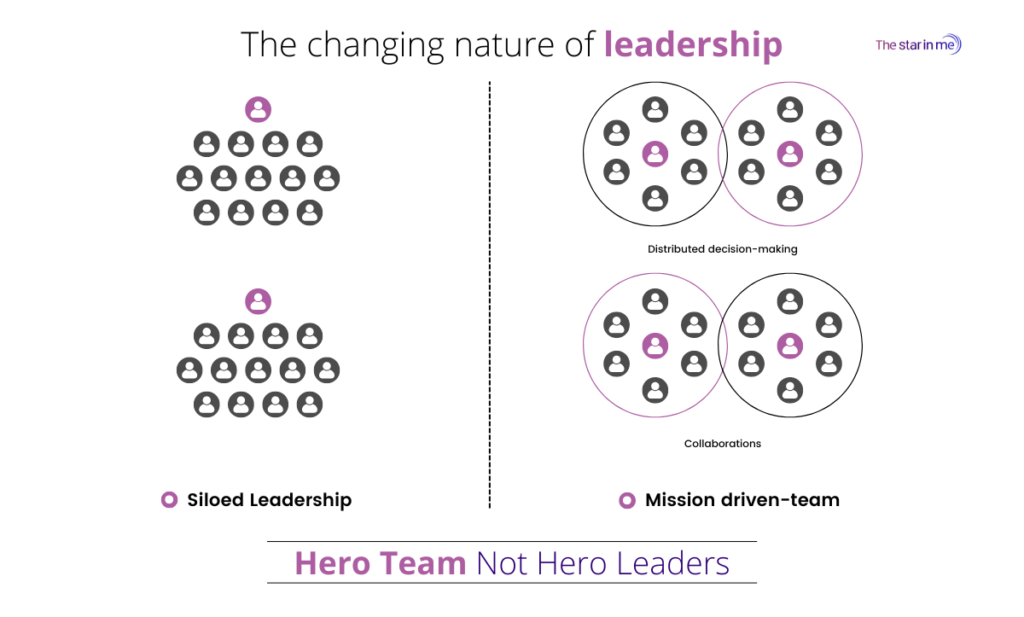
Leadership development improves the ability to change.
Change is the only constant, no matter which century we are in. This is why a commitment towards transformation should be a part of company culture. With a leadership development program, you can see improved business results since your leaders will drive innovation. They will be all set to navigate the evolving business world of Industry 4.0.
Relatable: Leverage Power Cues to improve your communication skills as a leader
What are leadership development goals?
You can work on leadership development goals only when you identify your organisational goals. That’s how you can accomplish the leadership development goals. For example, it could be either one or all of the following:
- You want to upskill individual contributors to move into management roles.
- You can enter new markets or develop new products
- You want to ramp up operations
- You want to create a leadership pipeline or flatter corporate structure.
Since it’s different for every organisation, you must define what your success looks like. For instance, a tech company might define their success by upskilling its first-time managers. But a government agency might define its success by teaching its ageing workforce new technologies.
You need to identify this to analyse your leadership goals.
Leadership goals are well-defined objectives that allow your leaders and potential leaders to be good at what they do and improve their skills. It’s about personal and organisational development using concise, clear, and attainable aims.
Unlike what many believe, they aren’t just an exercise to make influential leaders. It’s a way to encourage a happier and more productive workplace. And that your company vision always stays in focus.
But if you believe leadership development is only about improving leadership skills or developing leadership styles, you might miss out on many aspects you can gain from a leadership development program.
If you are wondering how to get started, here’s how:
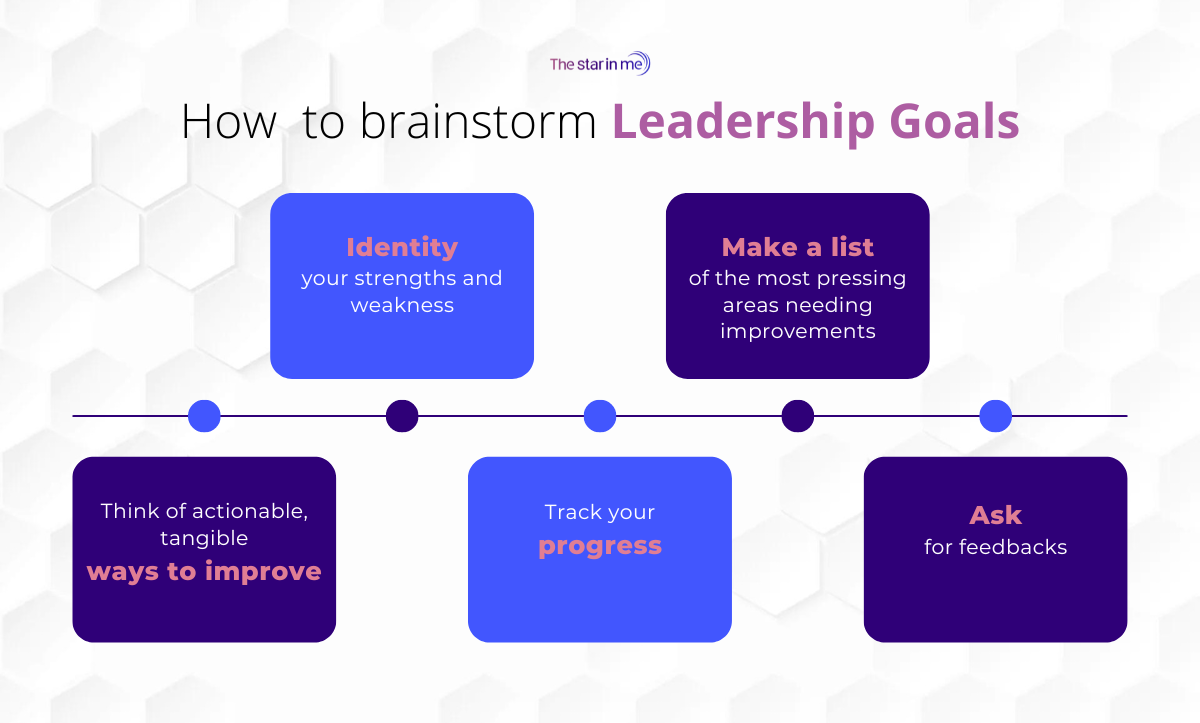
Leadership development goals will help you analyse a “big picture” and strengthen your potential leaders’ leadership skills over time. To help you get started, here are some goals you can use to build a “Future of Work team.”
Make leaders more adaptable:
Change is happening, and it will continue to do so. But a lot of organisations believe that they navigate the evolving marketplaces. They tend to assume that their leaders know it all. However, if you want organisational growth, adaptability to change and growth is the first goal that you must have. It will put your leaders in a better position to adapt and be open to learning new things.
Make efficiency-driven leaders and teams:
Time management is one of the critical aspects of managing multiple conflicting duties. And for that to happen, you must identify the areas that can help improve your team’s efficiency. It won’t be limited to corporate operations but also their obligations, allowing them to work towards the company and individual objectives. This will enable them to be more efficient.
Build dynamic teams:
The goal of a leadership development program must be to create smart leaders who understand inclusive and diverse teams can help achieve impossible goals. It is usually difficult to maintain high-performing teams that are collaborative, innovative, and agile. Your goal must be to keep finding appropriate people, empower them as a team, and assist them in carrying on their responsibilities.
Improve emotional intelligence (EQ/EI):
The pandemic shed some light on “how leaders should be”, and emotional intelligence became quite a highlight. It is a successful trait that allows leaders to have self-awareness, self-regulation, social awareness, and motivation. This together allows your leaders to have better decisions, goals, and stress management. While some of your leaders might be naturally born with such traits, others can develop them.
Become an active listener:
It goes without saying that active listening is one of the most critical leadership skills. And it is a trait that most professionals struggle with. This is why it should be a part of your leadership development goal. It will foster trust, encourage communication, and improve work relationships significantly. This goal can help organisations build a sense of motivation, inspiration, and purpose to enhance their strengths and weaknesses and efficiently accomplish their goals.
Practise big-picture thinking:
It is quite easy to comprehend that your leaders must never think small. You can grow if your leaders can take decisions that can help you stay competitive in the present and the future.
Using these goals, you can dial in on the following:
- What is important?
- What changes do you need to prioritise?
- What kind of training will be effective for developing better leaders?
Once you do that, get ahead to create a program that enables your organisation to lead, inspire, and motivate simultaneously.
You can also read: How to Decode and Develop Your Authentic Leadership Style?
Create a result-driven leadership development program
Whether you agree or not, it’s the responsibility of the senior leaders to invest, develop, and grow organisational leaders. However, many organisations fail to identify their leaders’ specific attributes. This is why organisations fall short of achieving their leadership development training programs. If you think this isn’t for you, here are some insights that might push you to rethink your leadership development plan.
- More than 70% of organisations found that they are experiencing a leadership gap.
- More than 75% of millennials look for new jobs and wish to stay there for at least 3 years.
- More than 63% of millennials confirm that no one is investing in their leadership skills.
- More than 80% of businesses confirm that developing leaders at all levels is important.
Even today, only 5% of organisations have a leadership development plan that helps them reach their bottom line. This is how you can ensure that you are taking a result-driven approach for your organisation.
Identify the candidates on different levels – Emerging Leaders, Middle Management, Senior Leaders
Did you know that only one in seven higher performers is a high-potential employee? This is where organisations go wrong. They believe that a high performer is also a high-potential employee. As a result, they are unable to transform them into emerging leaders.
This is why understanding your employees is crucial. So, before you start narrowing down the list of potential leaders, this is what you must know:
- There is a risk that the candidates you select might fail to achieve a senior position.
- There is a risk that you won’t be able to produce influential leaders in mid-management or senior roles.
- There is a risk that your leaders might leave and go to your competition.
Research shows that there are three elements to identifying suitable candidates, irrespective of their position in your company.
- Aspiration
- Ability
- Engagement
This will help you find true high-potential employees. For instance, you can rate them like this:
- Aspiration: Whether they want to advance to senior roles.
- Ability: Are they efficient in carrying out challenging or responsible tasks?
- Engagement: Will they show commitment and stay in the challenging roles?
While not all high performers could be the right candidate, they can be your starting point. Here’s what you can do:
- You can assess their aspirations and career management behaviours to determine if they can turn motivation into success and take on more challenging roles.
- Assess your potential leaders for their ability to know whether they can handle teams and improve organisational success.
- Evaluate whether the organisation is committed to the organisation and whether they find your organisation the best place to realise their career goals.
Never forget that you are building a leadership bench to have a competitive advantage in the future. Ideally, here’s how you can find leadership competencies at different levels. 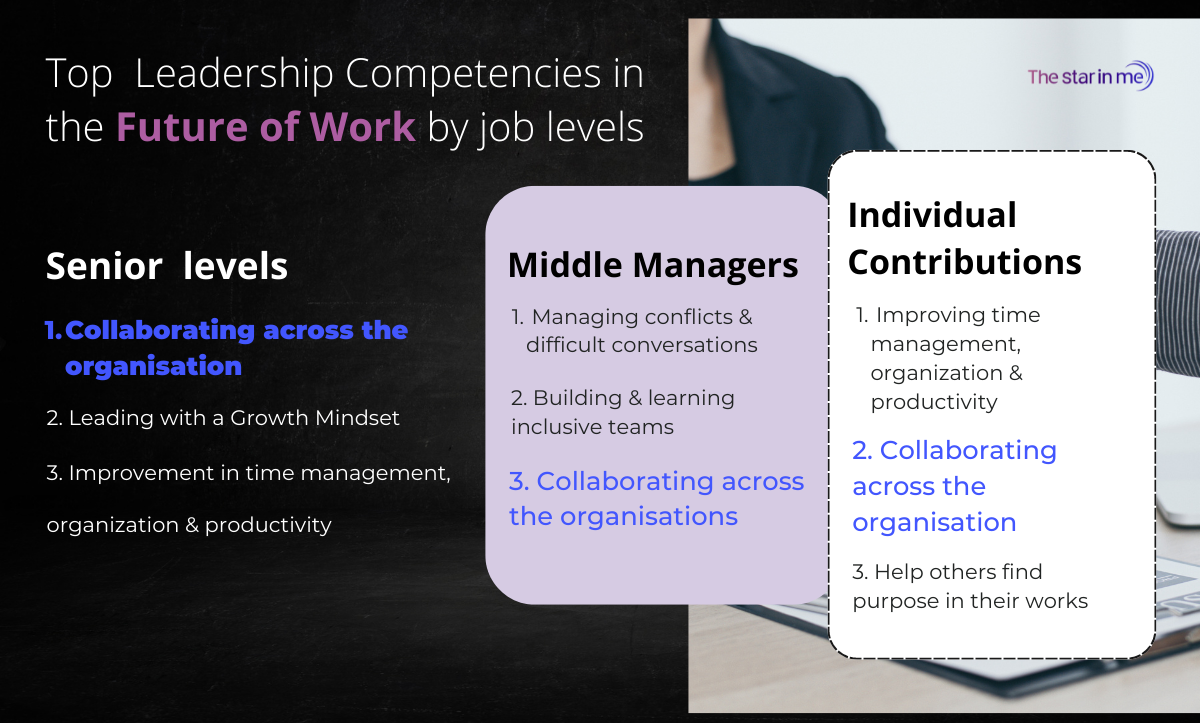
Once you finalise your list, you can use 1:1 meetings to discuss the leadership and learning opportunities and whether their vision aligns with your organisational needs.
Identify the type of leaders you need in your organisation
Many studies reveal that leadership has a direct cause-effect relationship with the organisation and its success. Influential leaders determine value, culture, and employee motivation, shaping institutional strategies. It won’t be wrong to say that successful leaders have one thing in common, they influence others around them to reap the maximum benefit.
This is why there must be a well-defined plan to develop, identify, and retain employees with leadership traits. Let’s not forget that having influential leaders is a luxury, so you can’t leave it to chance.
Hence, you must follow 5 ways to identify leaders in your organisation.
- Create enough leadership opportunities so that you can evaluate their leadership skills.
- Leadership isn’t only about charm or confidence. But you must evaluate their work ethics. This is why you must assess their integrity, cooperation, discipline, productivity, creativity, and reliability.
- Look for multitaskers since, in this time and age, handling teams is challenging. One needs to be efficient to keep the balance right.
- Check their command over verbal and non-verbal communication skills.
- See if they can curate challenges and recognise the solutions with calmness.
But to reach there, you must understand the various leadership styles and how they can impact organisational performance. This is why you must understand different leadership styles and see which fits your organisation perfectly.
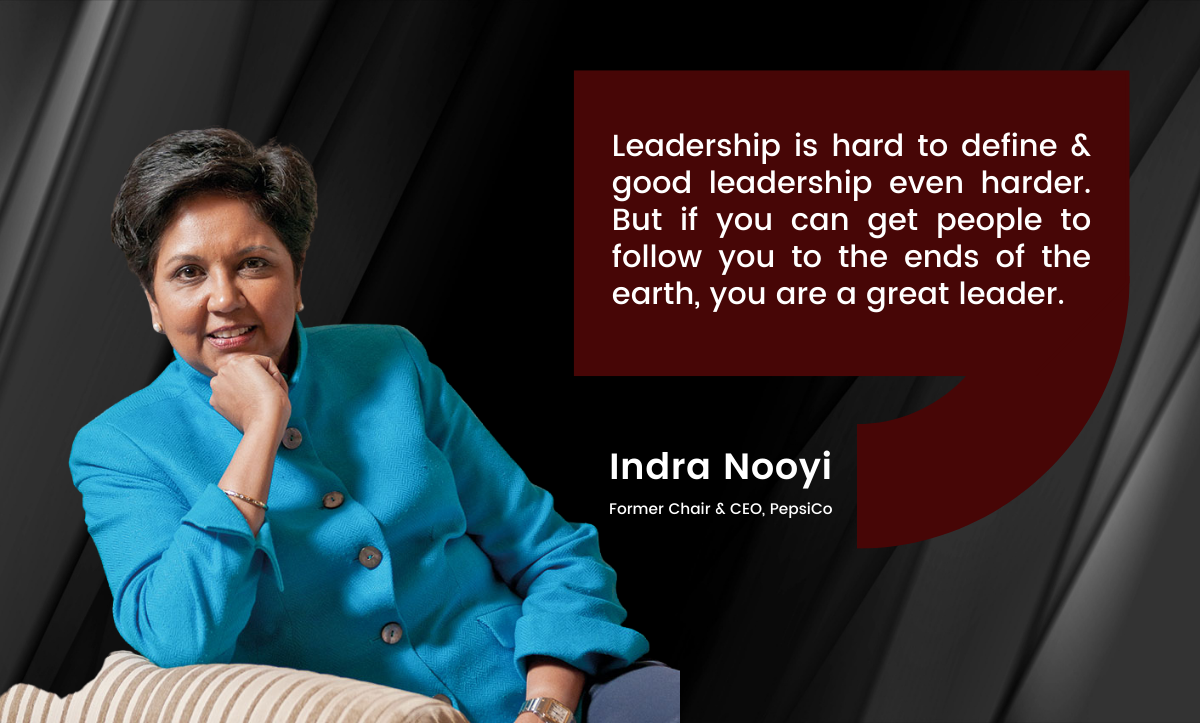
- Transformational leadership style: This style of leadership focuses on developing followers and understanding their needs. The idea floats around focusing on creating an overall value system for the employees along with moralities, skills, and motivation levels. This type of leadership bridges the gap between followers and leaders. This type of leadership helps employees look beyond their self-interests. A study confirmed that this leadership style enhances the followers’ overall development, which positively impacts organisational performance.
- Charismatic leadership style: It is one of the most successful styles since the leaders develop a vision and followers follow and execute the idea. They invite innovation and creativity. But the issue is that the followers depend entirely on the leader and often become directionless after a while. Since no motivation or induction is involved, you can’t expect to scale your organisational performance.
- Transactional leadership style: This type of leadership is about always giving something in return. They often include perks like promotions, pay raises, new responsibilities, and performance reviews. But the challenge here is the setting of expectations. Since there is an exchange of targets and rewards, it can go either way. However, this type of leadership has seen a positive impact on organisational performance. And since the organisation and its human assets achieve tangible and intangible rewards, one can retrieve expected performances.
- Democratic leadership style: In this style of leadership, decision-making is often decentralised. However, there is a high potential for weak execution or poor decision-making. While this style motivates the employees to perform better since the opinions are valued, the equal stake in the decision-making makes it quite tricky. Having said that, since employees can voice their opinions and try their creativity, you can easily create future leaders in the pipeline.
- Autocratic leadership style: They mostly believe in getting things done their way. All the decision-making rights stay with them. The employees often are less creative since there is no 1:1 conversation. It’s usually a one-way conversation. The negative impact of this style is that there is no communication or socialising within an organisation. This is only helpful when you have to take care of tight deadlines.
- Bureaucratic leadership style: It influences the people under the leaders, and they end up following policies and procedures designed by them. In this style, there is no particular development or motivation of the employees. They just focus on tasks that must be completed systematically. This is only helpful for tasks which require time and one needs to follow a procedure.
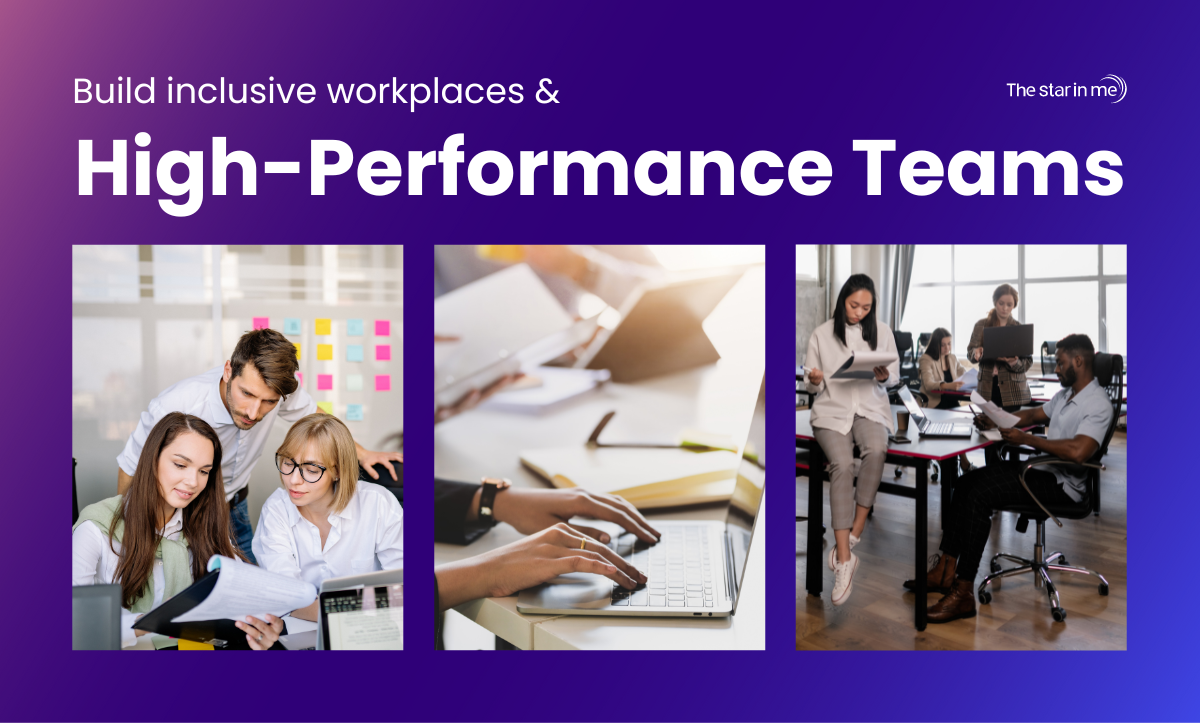
Align individual career vision with your business needs
Your business is nothing without your employees. In the same way, you can’t meet your business needs if you ignore individual career vision. This is how you can align individual vision with your organisational vision or bottom line.
- Find a way to relate your organisational goals to your employees: If you want your employees to be genuinely invested in your vision and mission, you need to make them understand how they contribute to the company’s goals. They must understand that they make a difference. That’s how they can make a difference in their day-to-day work. This is why your business goals must be clear, actionable, and understood by the employees.
- Give them an opportunity for personal growth: You must offer your human asset resources and different opportunities so that they can grow themselves while working for your company vision. It could be leadership training, skill-building training, a casual learning atmosphere, and 1:1 with management so that they can get constructive feedback about the gaps and work on them. Since they aren’t one-size-fits-all, you must tweak methods so your employees can work on their personal development goals.
- Allow your employees to list their personal goals: If you always talk about business goals and don’t allow your teams to work on their personal growth, they won’t feel challenged or rewarded. Make sure your employees can easily share their goals and personal visions. But make sure to align them with the business vision. Also, it should be measurable so that you know it is possible within the said time frame.
- Train managers to mentor and lead: Since you will make actionable plans and specific goals and use performance reviews, you will be able to find skill and knowledge gaps. Your leaders must keep them motivated to see the right environment to grow. This is why training of the upper-level management team is necessary so that they can dedicate themselves to overall employee development.
Define the L&D goals and skills
The first step to achieving L&D goals is identifying or defining which business goals you wish to focus on. This is often specific to your organisation and employees. Once you have that sorted, you can create a list and strategies accordingly. However, we have shared a few goals that can act as a starting point for you to get started.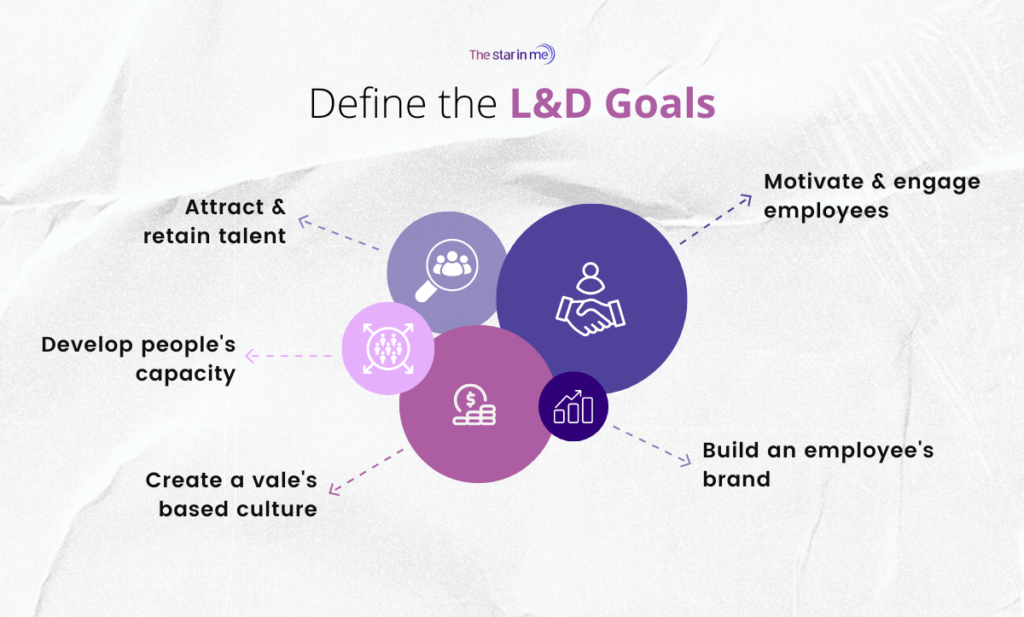
- Increase your human capital’s capabilities: If you want to sustain, it’s time to increase your human capital’s capabilities. Their outdated information won’t help them navigate the rapid changes happening today. This is why relevant work experience and skill set are the need of the hour to keep developing leaders in the pipeline. If you invest in your asset, you will easily reach your performance targets.
- Create a culture of values: Leadership and development will help establish a value-based culture. You will be able to develop a feeling of community which is quite an issue with the increase in the virtual and globally scattered workforce. Millennials are also looking for companies that believe in creating a culture of value.
- Creating an employer brand: L&D can help improve your brand’s trust and credibility by strengthening its reputation as one of the most “preferred” employees. It will allow you to transmit many things around performance, financial strengths, your position in the market, and so on. With the Great Resignation still in progress, having an L&D goal around branding will allow you to show your brand in a positive light.
- Motivate staff: The primary approach to investing in L&D must be to offer your employees a chance to learn and develop new skills. Research revealed that learning keeps people happy. Allowing your employees to grow and progress makes them feel more energetic and satisfied.
- Retain and attract talent: Since L&D helps you implement company strategy, you will stay with current imperatives and evaluate the capacity gaps. Once you do that, you will create a value and knowledge-based culture that will help your employees see their future with your organisation.
Identify the L&D methods to use
By now, you are quite aware that leadership and development programs help you avoid crumbling under high-pressure situations. Here are some techniques that you can use to grow your leadership strategy.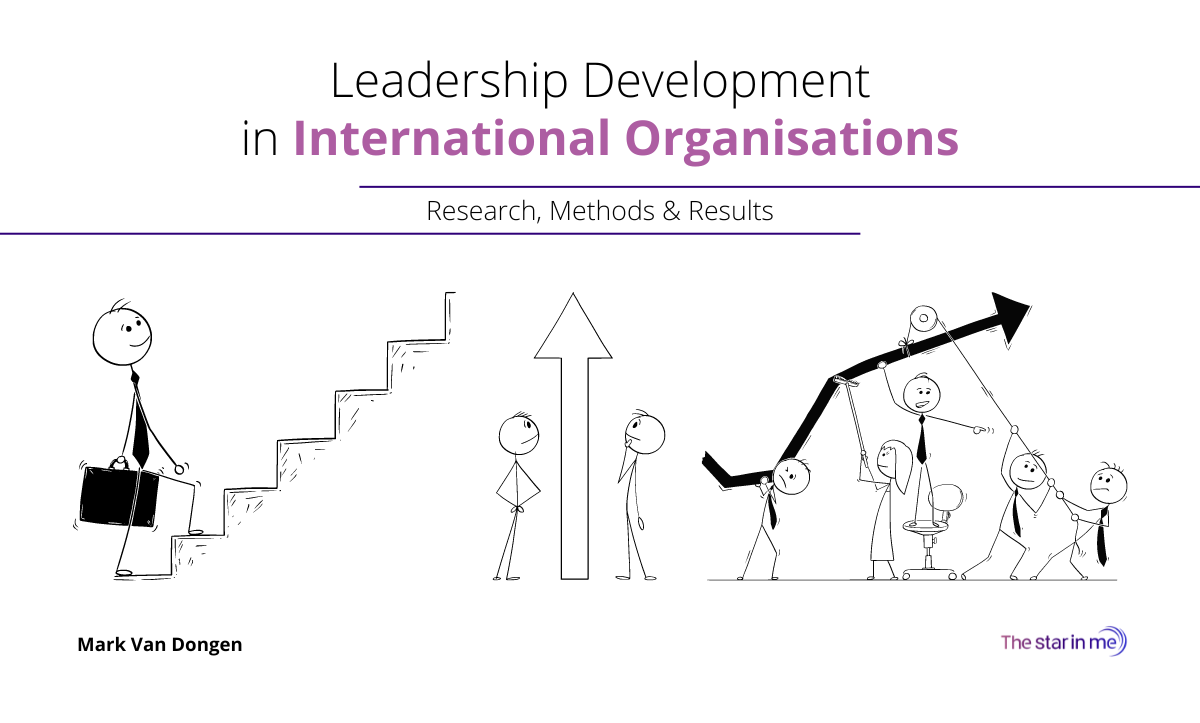
- Mentoring and coaching: These are practical components of any leadership and development program. You must engage with your senior leaders about how they want to nurture their potential leaders across the team. You must establish a mentoring program and make an accountability process to review and assess whether you are getting desired results.
- Leadership development programs: While coaching and mentoring are often the responsibility of the leaders within an organisation if you want to cultivate leaders in your organisation and prepare talented individuals who can step up. You can talk to L&D leaders and create a strategy to help improve efficiency and maximise individual contributions to the organisations.
- Real-world and real-time experiences: On-the-job training programs are essential, but at the same time, if you want your employees to take up more challenges over time, they need to hone the skills that will allow them to experience real-life workplace situations. This is why soft skill training is required in any leadership development program. Skills like conflict resolution, leading with influence, problem-solving, empathy, critical thinking, communication and others are an integral part of L&D offerings.
Often leaders suggest that organisations must use diverse learning methods to hone the leadership skills of their employees.
- One-on-one learning is where the goal is knowledge transfer or succession. The more you emphasise day-to-day learning, the growth of potential leaders will be immense.
- Group learning is an approach where you can learn about tackling real-world challenges, enabling leadership development, developing news skills, and breaking functional silos. The same option will help you identify employees with leadership potential.
- Self-directed learning is also essential if your employees want to reflect on what they learnt and how they can leverage it for strategic thinking.
Measure results and optimise the execution
With so much happening in terms of investment, learning, and implementation, as an organisation, you would want to know whether it’s good or worth your time. Here are a few key metrics that can help you think through.
- Skill attained: You must measure the knowledge levels before and after the learning session. You can check it while evaluating their job role and assignments.
- Skill applied: Use real-world experiences to check whether the session holds any purpose with hands-on labs.
- Behavioural skills: It is important to know whether your employees align their interpersonal skills with your values. You can measure it individually and at team levels.
- Goals attained: L&D results are easily measured by relating them to the immediate goals of each learner.
Further, you can evaluate the results and optimise based on everyday operations, talent attraction, and employee retention.
Benefits of leadership development programs
You are thinking of investing in your employees’ training and scaling across your company. But is it all worth it? Here’s why you must!
Establishes a succession plan
Nearly 90% of the organisations conferred succession planning as an essential HR process in a survey conducted by TJinsite, the research and knowledge arm of TimesJobs.com. Succession planning helps an organisation prepare for the unknown and uncertainty and brings positive changes to the organisational planning.
A leadership development program allows you to achieve just that. Using it, you can determine knowledge gaps, knowledge skills and abilities. You can develop talent to stay competitive in developing potential leaders across all levels.
Increases adaptability
Change and disruption are the new normal in today’s evolving business landscape. While it isn’t uncommon for companies with an adaptable workforce, it will become an asset. According to the EY survey, a commitment to continued learning can facilitate discussions around new ideas and help leaders and employees to adapt to future challenges. It will help bring out the best in your people.
Improves retention
Employee turnover still stays the most challenging aspect of any organisation. In fact, according to a report, more than 51% of employees voluntarily left their jobs in the last five years. Around 31% of participants confirmed that they would stay less than one year in an organisation.
Your employees feel valued and heard when you give ample learning and career advancement opportunities within your organisation. And this directly improves their engagement, which reduces employee turnover.
Improves business results
A leadership development program will enable you to establish and keep a competitive advantage if you do it right. With the proper training, your leaders and workforce will formulate and execute effective strategies that will help move their companies forward. Since your workforce will have a better ability to adapt, solve problems, and navigate changes, it will enhance your organisation’s agility to thrive in any business environment.
In short, it will help you improve financial performance and generate 5 times more returns on investment compared to organisations that focus less on their human assets.
Invest in your workforce today
If you are ready to invest in your people, learn more about the corporate offerings. These offerings will enable you to scale your leadership development across all levels.
